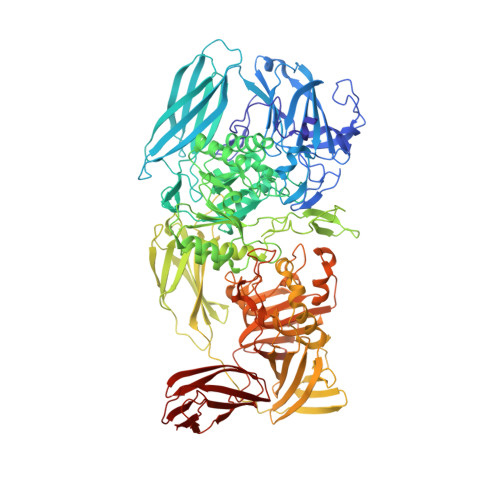The cryo-EM Structure ofThermotoga maritimabeta-Galactosidase: Quaternary Structure Guides Protein Engineering.
Miguez Amil, S., Jimenez-Ortega, E., Ramirez-Escudero, M., Talens-Perales, D., Marin-Navarro, J., Polaina, J., Sanz-Aparicio, J., Fernandez-Leiro, R.(2020) ACS Chem Biol 15: 179-188
- PubMed: 31874027
- DOI: https://doi.org/10.1021/acschembio.9b00752
- Primary Citation of Related Structures:
6S6Z, 6SD0 - PubMed Abstract:
Lactose intolerance is a common digestive disorder that affects a large proportion of the adult human population. The severity of the symptoms is highly variable, depending on the susceptibility to the sugar and the amount digested. For that reason, enzymes that can be used for the production of lactose-free milk and milk derivatives have acquired singular biotechnological importance. One such case is Thermotoga maritima β-galactosidase (TmLac). Here, we report the cryo-EM structure of TmLac at 2.0 Å resolution. The protein features a newly solved domain at its C-terminus, characteristic of the genus Thermotoga , which promotes a peculiar octameric arrangement. We have assessed the constraints imposed by the quaternary protein structure on the construction of hybrid versions of this GH2 enzyme. Carbohydrate binding modules (CBM) from the CBM2 and CBM9 families have been added at either the amino or carboxy terminus, and the structural and functional effects of such modifications have been analyzed. The results provide a basis for the rational design of hybrid enzymes that can be efficiently attached to different solid supports.
- Spanish National Cancer Research Centre (CNIO) , Melchor Fernández Almagro 3 , 28029 , Madrid , Spain.
Organizational Affiliation:

















